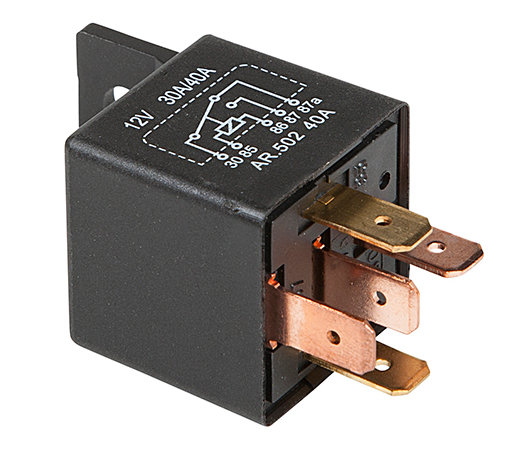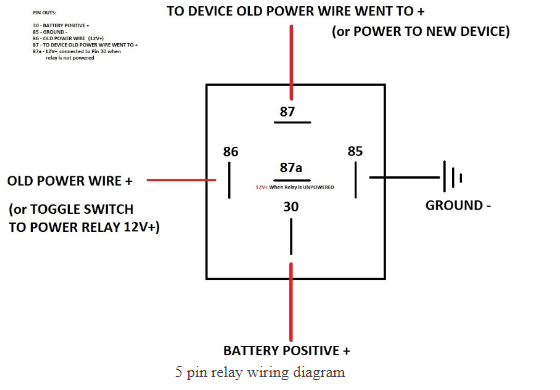OUTLINE:
For Beginners! Simple Methods for 5 Pin Relay Wiring
 173
173Relays are used in a wide range of applications to control the flow of electricity and switch circuits on and off. They are widely used in autos, test and measurement equipment, power supply, home automation systems, and many more applications. If you are involved in manufacturing or production, you are likely to require the use of relays. In this article, we will explore the wiring method for a 5-pin relay, which is simple and easy to understand even for beginners.
What is 5 pin relay?
A 5-pin relay is a commonly used electronic component that is widely used in many industries and applications. Here are a few common industries where 5-pin relays are frequently used:
Automotive industry: 5-pin relays are commonly used in automotive electrical systems, such as turning on and off the vehicle's headlights, power windows, horn, etc.
Industrial control systems: 5-pin relays are often used in industrial control systems, such as controlling the operation of motors, pumps, solenoids, and other devices.
Home appliances: 5-pin relays are also used in home appliances, such as air conditioners, refrigerators, and washing machines, to control the operation of different components.

How to wire a 5 pin relay?
A 5-pin relay consists of an electromagnet coil, two contact pins (87 and 87a), a common pin (30), and two coil pins (85 and 86). The relay works by using the magnetic field generated by the coil to move the contact on and off. When the coil is not activated, 30 is connected to 87a, and the switch is "OFF". When current is applied to the coil, 30 is then connected to 87, and the switch is "ON".
- The pins of the relay are marked with numbers and letters.
- Pin 30 - Through a fuse, power is routed from the battery to this pin.
- Pin 87 - Power comes out of this and goes to any accessory when your switch is turned ON.
- Pin 86 - The switch provides power to this pin.
- Pin 85 connects to the ground.
- Pin 87A - When the switch is turned off, power is drawn from this pin.

To wire a 5-pin relay correctly, here is a perfect guide for you:
- Determine the pinouts of the relay. Check the labeling on the relay carefully to ensure that you have identified the correct pinouts for the relay that you are wiring.
- Strip the wire and make the necessary connections. Use the appropriate gauge wire for the connections and make sure to solder them securely to the relay pins.
- Apply heat shrink tubing over the connections. This will provide an extra layer of protection against corrosion and physical damage.
- Test the connections using a test light. This will help to ensure that the connections are good and that the relay is functioning properly.
- Secure the relay in place using electrical tape or other appropriate means, ensuring that it is firmly held in position.
- Test the relay again to confirm that it is working properly before putting it into use.
By following these steps carefully, you can wire a relay successfully and ensure that your electrical system functions reliably and safely.

Wiring a 5 pin relay is a relatively straightforward process for beginners. All you need is the right tools and an understanding of the internal wiring diagram. By following the step-by-step instructions for the external wiring, you can easily wire the relay. However, it is important to exercise caution and prioritize electrical safety during the process. With these considerations in mind, you can successfully wire a 5 pin relay and ensure reliable and safe operation of your electrical system.

Disclaimer: The views and opinions expressed by individual authors or forum participants on this website do not represent the views and opinions of Chipsmall, nor do they represent Chipsmall's official policy.

share this blog to:

